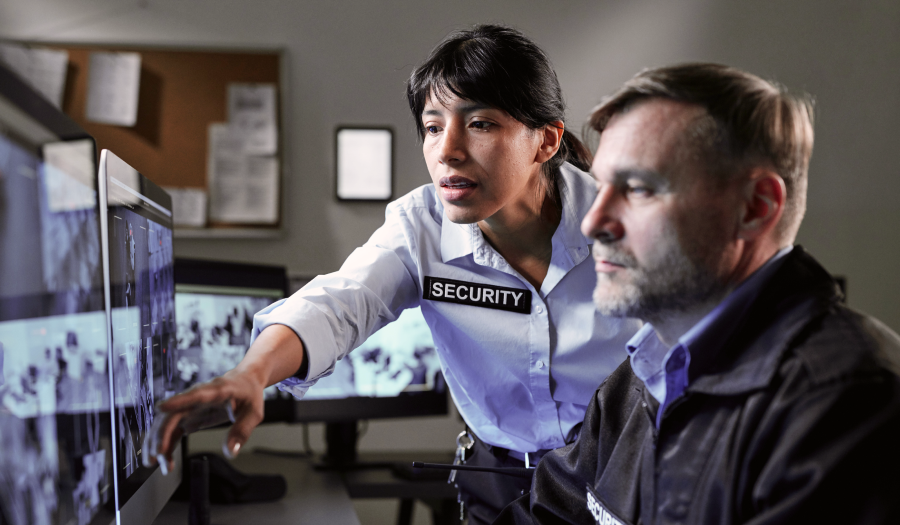It’s 2017 – Do You Really Need a Third Party Vendor for your Onsite Technology?

To better service their participants and stakeholders, meeting planners are constantly challenged by the need to implement new technology for their meetings and events.
Previously, whether it was onsite check in, self-service check in, attendance tracking, exhibitor lead retrieval and mobile apps, the only real option for most meeting planners was to bring in an outside, third party vendor.
Technology was too new, or too equipment intensive, or too specialized to deal with. Who had the time and the staff to deal with all of it? It was a bargain to spend five or ten thousand dollars to get the job done and make your clients happy.
But, there was a downside to all this, a dirty little secret no one really wanted to deal with.
- It wasn’t the cost, even though it was quite costly to bring in a third party vendor. After all, your client or your attendees paid the bill, what did you care?
- It wasn’t the performance, since everything, mostly, worked as advertised.
The REAL issue was your data integrity and accuracy!
With few exceptions, whenever a third party vendor came on board to manage a specific aspect of your onsite technology, it usually meant exporting your database at some point before your event and handing it over to your vendor and they did their thing.
It could have been live audience polling, or exhibitor lead retrieval. It could have been a useful mobile attendee app or an onsite check in technology.
Whatever it was, they needed your database. Of course, the result was data drift.
Data drift is what happens when you have two or three versions of your database in use. No matter how good your intentions were, no matter what your update process was, it invariably happened – data in one version of the database drifted from the data in different database.
We all know how it happens. Late registrations, onsite name changes, cancellations, additions to the client record. It happens all the time, it’s simply part of the meetings business. All of a sudden you are running around fixing things, comparing records, and trying to make things work. All because you had two or more databases out there that weren’t synchronized.
But that was then.
It’s 2017 and things are much easier to deal with. We are now a cloud-based world of technology, and more and more companies are making it very easy to implement a wide variety of services using smart phones, tablets and easy-to-manage standard computers and printers.
Exhibitors can now use their smart phones to scan attendee name badges, ask company specific questions and access attendee data in real time.
Meeting planners can deploy onsite check in services (both self-service and staffed) utilizing standard computers, printers and scanners.
Presenters can offer real-time audience engagement (e.g. polling and session surveys).
Hotels and transportation vendors can access up-to-the-minute data on rooming lists and manifests.
Exhibitors and attendees can schedule face-to-face meetings and manage their appointment schedules quickly and easily.
Most importantly, meeting organizers and PCOs can design and publish native attendee and organizer apps to the popular app stores almost instantly and at zero additional cost to their operating budgets.
To tie it all together, all of these services will tap into a centralized database of attendee records. Changes made in one service will reflect to all services immediately and with complete accuracy. No more dealing with data drift!
This growing trend of cloud-based technology apps and services can be experienced in EventsAir, a comprehensive event management platform that includes dozens of advanced services and technologies in their inclusive app store.
As part of their EventsAir subscription, meeting organizers can deploy native attendee apps, offer self-service and staffed onsite check-in services, exhibitor lead capture/retrieval, session attendance tracking, audience live polling, meeting matching and much more. You need only source equipment such as printers, scanners and workstations.
The role of third party vendors is often changing as well. In many cases, consultants and outside vendors are brought in as technology and event experts but utilize the meeting planner’s own technology. Data integrity is maintained and meeting planners still own and oversee onsite processes. Every meeting planner will develop their own technology processes and develop the best processes to support their requirements.
Meetings technology is evolving in dramatic and very exciting ways, much of which makes it really easy for you to manage your technology directly, and saving many thousands of dollars in the process. Not to mention maintaining your data in one single database across all of your technology offerings.
That’s a very good thing!
EventsAir has been at the forefront of Event Technology and Innovation for over 30 years, continually pushing the boundaries of what an event management platform can do. Built by event planners for event planners, EventsAir is a secure, scalable, cloud-based solution that can manage everything from in-person, virtual to hybrid conferences, meetings and events in a single online platform – anywhere, anytime and on any device. In use in over 50 countries by multi-national corporations, professional conference organizers, government departments and tertiary education institutions, EventsAir is also used in global congresses such as G20, APEC, CHOGM and ASEAN, as well as sporting events like The Olympic Games, World Rugby, Commonwealth Games and Pan Am Games. EventsAir is trusted by event professionals around the globe. For further information, visit www.eventsair.com



